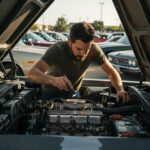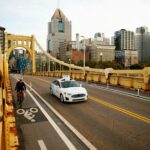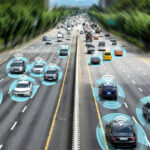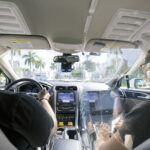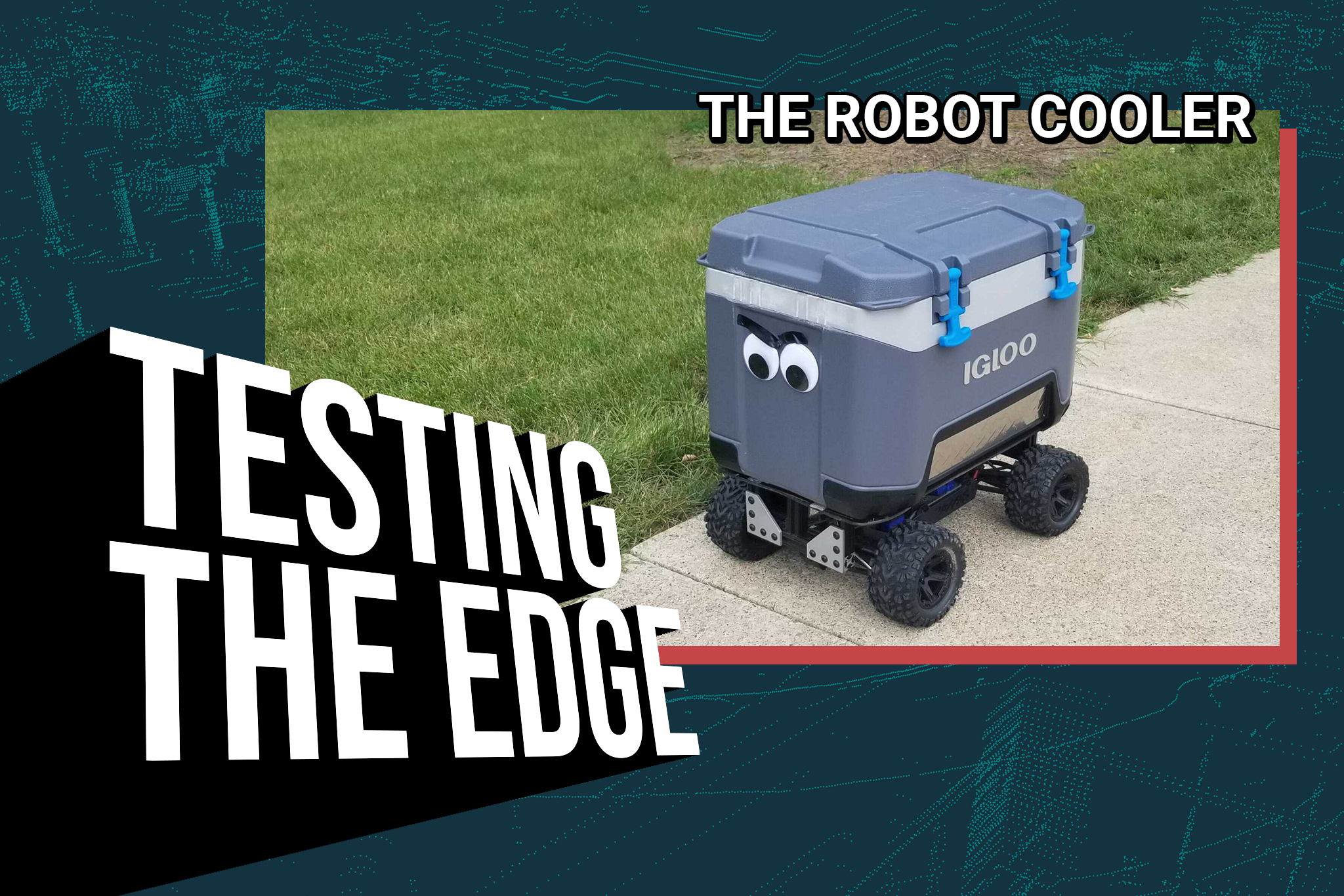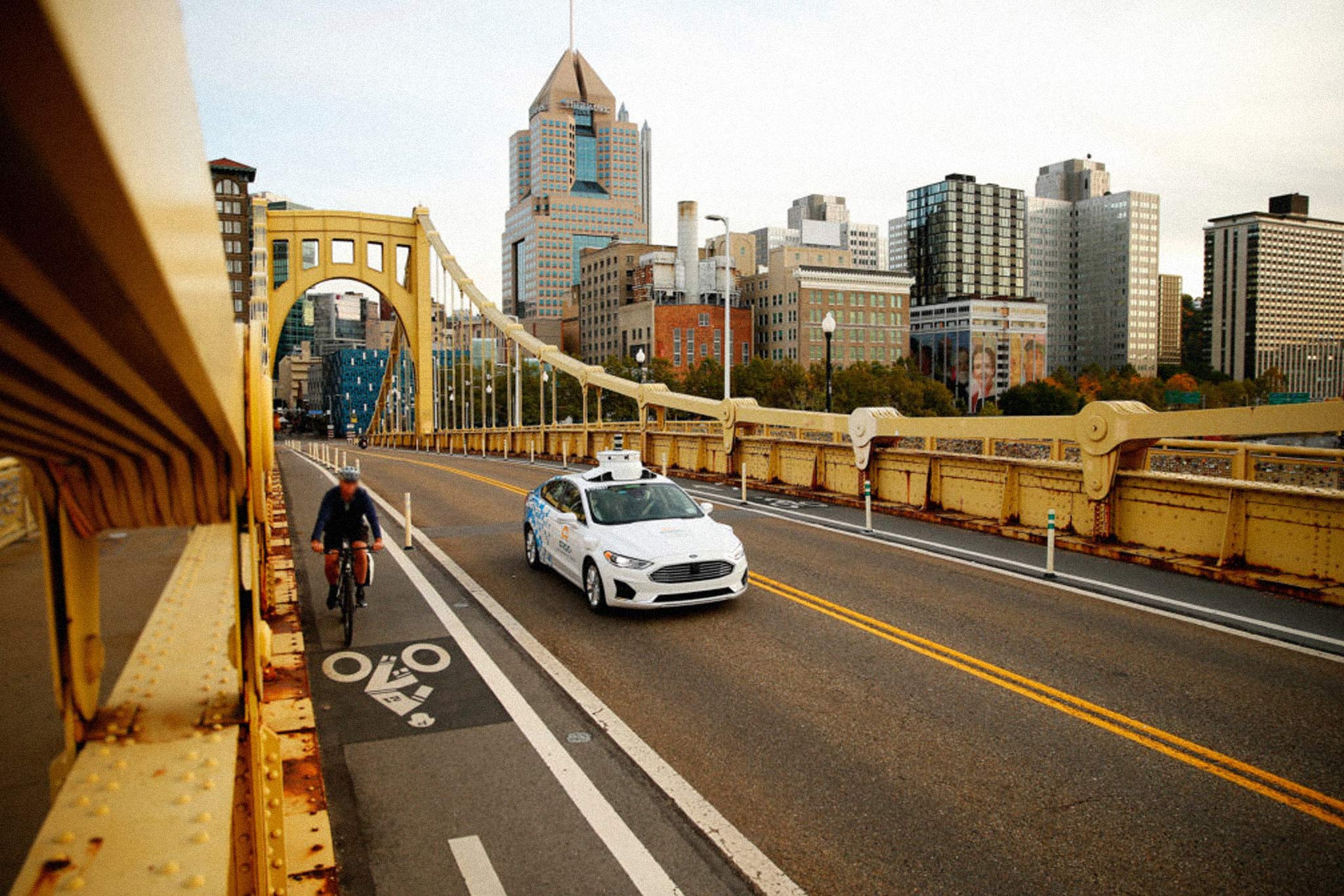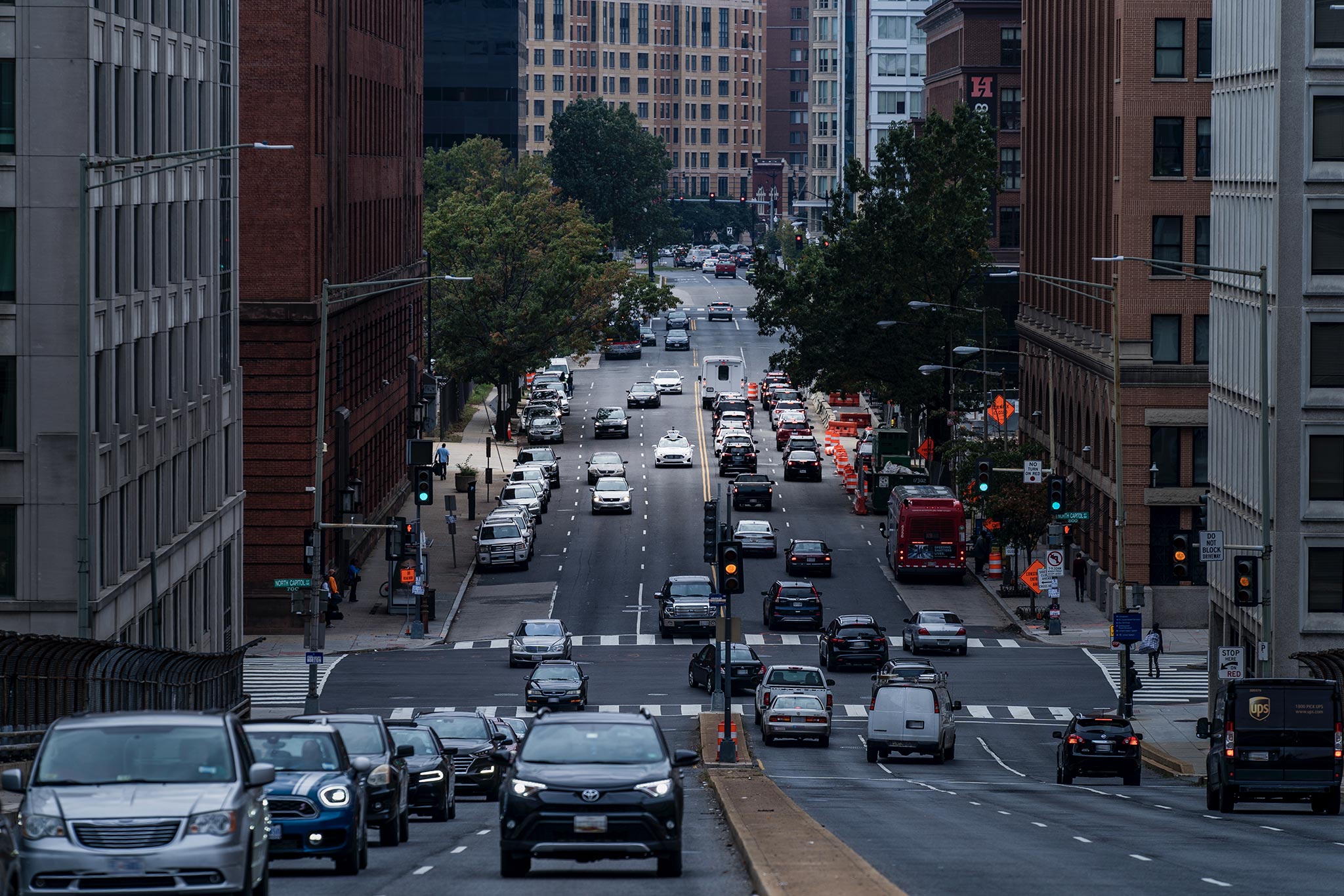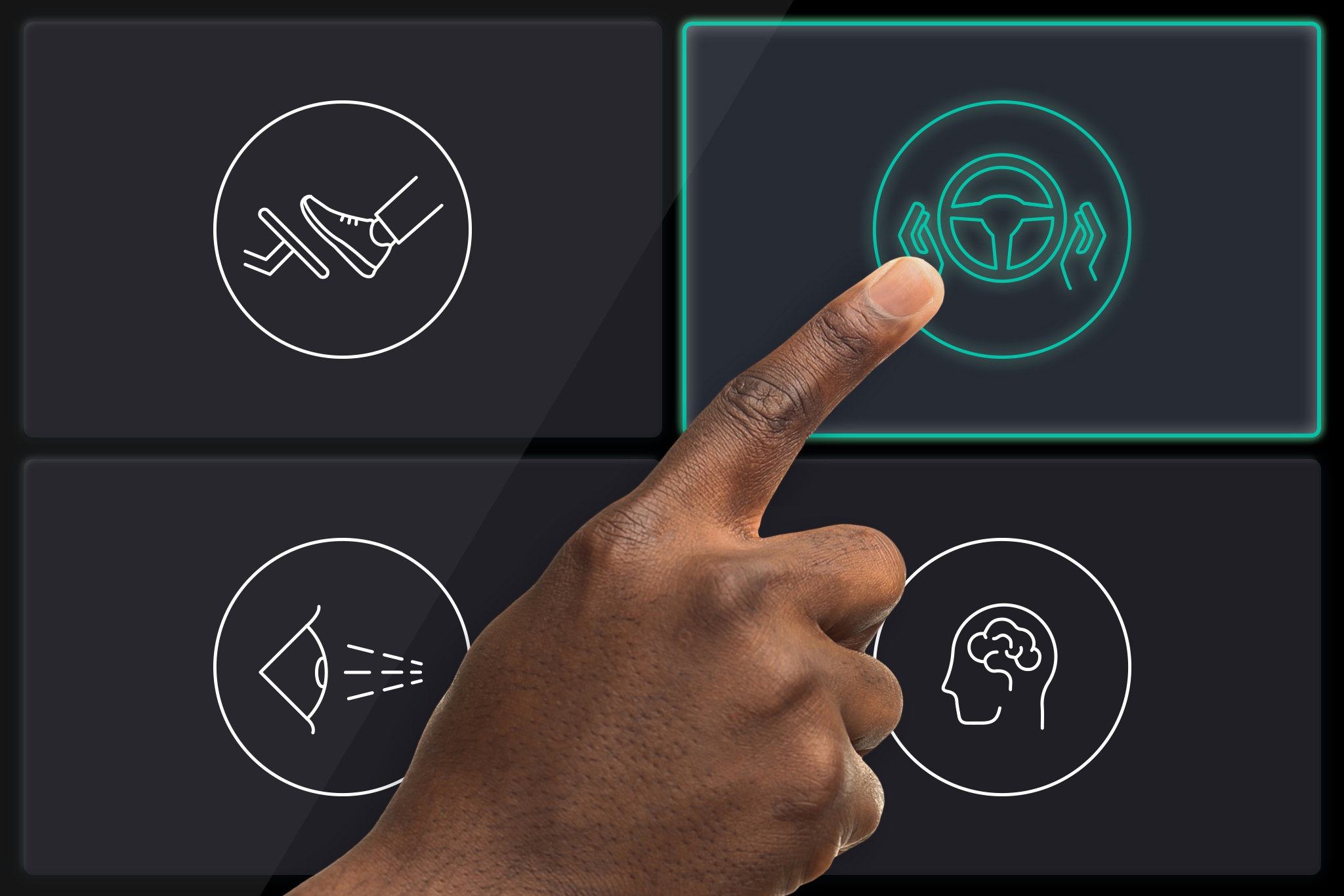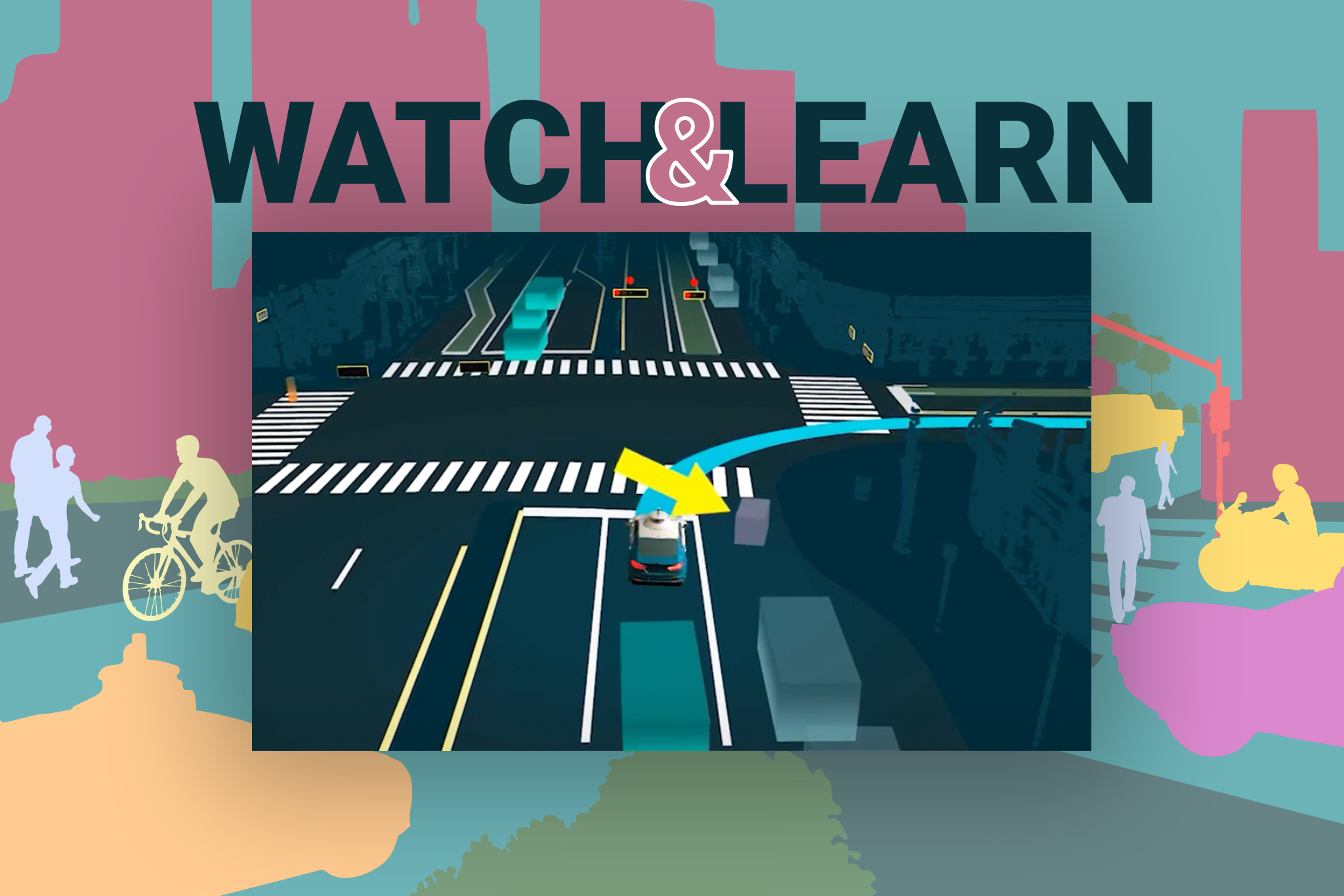This is the latest in our “Testing the Edge” series, focusing on ingenious ways that the Structured Test team at Argo AI tests different components, systems, and scenarios for self-driving cars.
A cooler on wheels isn’t an uncommon sight at cookouts and tailgates across the United States, especially during football season.
But a cooler that can move around without someone lugging it? That’s unusual.
Yet that’s what you might see if you visit self-driving technology company Argo AI’s test track in Western Pennsylvania, not far from their headquarters in Pittsburgh.
The robotic cooler was built in the summer of 2021 by Jack Work, a 35-year-old Integration Technician Associate at Argo. It’s actually a regular beverage cooler bolted to the back of a stock radio controlled car from the brand Traxxas, which Work and other engineers at Argo can drive remotely and deliberately into the path of Argo’s self-driving test vehicles on the track, to see how they respond.
Pedestrians, cyclists, and animals are commonplace on the roads, but why is Argo concerned about robotic coolers running into the path of their self-driving vehicles?
Because big robots should watch out for little robots: As Argo ramps up its own testing of autonomous vehicles for goods delivery and ride-hail services across multiple cities in the U.S. and Germany, the company inevitably expects to encounter delivery bots from other companies making their rounds.
“There’s a company called Kiwibot that’s coming to Pittsburgh,” Work says, “They have these little delivery vehicles, and we want to see how we’ll be able to handle those.”
Kiwibot is part of a new, growing segment of companies that are already deploying fleets of small, low-speed, wheeled delivery robots in cities across the United States. Other names in this burgeoning sector include Coco, Tortoise, Starship Technologies, Yandex and Refraction AI.
These delivery bots are designed to transport everything from restaurant food like pizzas to school textbooks, over short distances of just a few miles at a time. They usually share the sidewalk with pedestrians, or bicycle lanes with cyclists, but they may cross the road and some even ride on it like cars.
Though their cargo varies, these delivery bots are all dedicated, broadly speaking, to solving the “last mile” problem of delivery. That is: efficiently moving goods from local merchants to their end consumers.
Like full-sized self-driving systems, some of these small delivery robots rely on a combination of sensors to understand their surroundings, including camera, radar, and lidar.
Most delivery bots are smaller than full-sized cars, but they vary considerably in size: Kiwibot’s robots are about as small as a sheep dog (27.5 inches tall, according to one report), while Refraction AI’s are more similar in size to a kid on a bicycle, around 4.5 ft. tall and weighing in at 150 lbs, unloaded.
That size variation can make it more challenging for other road users to reliably spot and react to these delivery robots, so human drivers and autonomous driving systems must be prepared.
A recent Reddit post showed this exact type of encounter unfolding in real life: a full-sized self-driving car and a small delivery robot meeting at an intersection.
This is exactly the kind of encounter that Argo AI is training its self-driving system to anticipate — in part by building props like the robotic cooler.
The Argo self-driving system, which is currently being tested on public roads in seven cities, detects objects and pedestrians 360 degrees around and up to 400 meters (1,312 feet) away using a suite of overlapping sensors — namely, cameras, radar, and lidar.
The self-driving system’s versatility enables it to adapt to the actors and their behavior on the road. “For a wide class of known objects and actor behavior, such as pedestrians or cyclists, the vehicle’s ‘closed world’ system is able to detect it and provide accurate predictions of future behavior,” explains Argo AI Chief Technology Officer, Dr. Brett Browning.
“If the vehicle encounters an object it’s never seen before, or an actor that is behaving in a very unusual way, the ‘open world’ capability in the system enables it to detect and safely navigate the object with added caution.”
By repeatedly introducing a mobile, robotic cooler to the self-driving system, the engineers aim to provide enough data to graduate that type of rarely observed road user from an unknown (triggering the open world system), to something immediately recognizable (detected by the closed world system), and optimize the car’s ability to predict its movement.
The system also gets smarter as it encounters more varied, realistic driving scenarios. The new robotic cooler is a way for Argo engineers to safely expose the system to new types of scenarios, in a controlled, non-public setting, without interrupting someone’s robot-delivered pizza order.
Avoiding delivery robots is certainly a sound objective, worth preparing for. But here’s the real question: what do Argo employees put in the test track cooler?
“We had a bike event and tried to use it to bring cold water to people, but the water was too heavy and it bottomed out,” Work says with a laugh. Ideally, he says, Argo engineers will use it to deliver ice cream to employees at their test track on hot days.
Argo’s robotic cooler is one of the many interesting, custom-built machines — from mud cannons to robotic dogs to rain machines — that the company uses to help test the performance of its self-driving car system in the face of various obstacles, situations, and edge cases it may encounter when driving on public roads.

